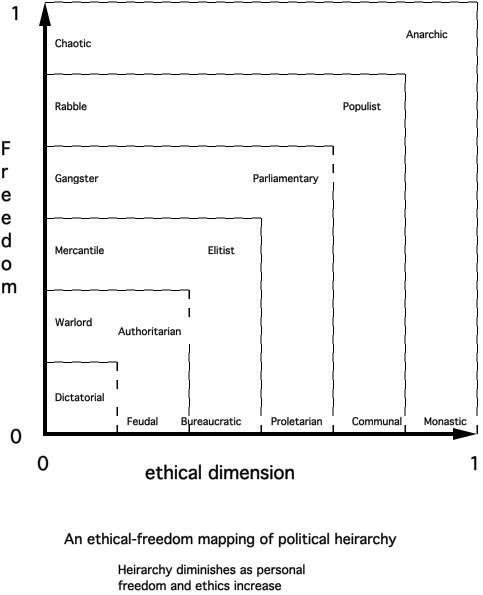On November 4, 2011, I put some thoughts about democracy into a short comment, which I posted at the web-site of Louis Proyect, a writer I respect.
The Unrepentant Marxist
http://louisproyect.wordpress.com/
The thread into which I placed my comment was a heated discussion between Marxists about the pros and cons of one Marxist academic and media hound called Zizek, and his recent article “Is Democracy the Enemy?”
(http://louisproyect.wordpress.com/2011/10/31/is-democracy-the-enemy-a-reply-to-zizek/)
My first reaction was: democracy is only the enemy if the people are your enemy.
Later, I was reminded of some important history (noted below), and from this, and also reflecting on my own biases that show up in my writing, arrived at a conclusion about what “democracy” really means, or at least what it really should mean.
<><><><><>
November 6 is the 20th anniversary of the end of the Communist Party in the Soviet Union, which itself was declared dissolved on December 26, 1991.
Here is a discussion about this at RT TV:
http://youtu.be/IuNe1DA4gnE
Two quotes from the show that I particularly liked:
“There are more communists in Berkeley than in Poland” — by a Communist Party official in Poland in the 1980s.
“The social contract was broken…” hence the people lost faith in the Communist Party (from the 1970s) and finally the state (the USSR).
I view Occupy Wall Street (OWS) as a popular reaction to “the social contract was broken” (from 1981 on) in the USA (as with the similar popular protests in the Euro-zone these days).
The Communist Party had ceased to be the exclusive holder of power in the USSR after 1989; Gorbachev had introduced/allowed multiparty parliamentary politics, though the CP retained much control. So, the USSR was a multiparty democracy between 1989-1991.
An interesting conclusion of the panel in this show was that the end/”collapse” of the CP/USSR was a contingent event, not an inevitable one. Had Gorbachev acted differently, there might still be a multiparty democratic USSR.
I think the social contract, and political freedom are the two essentials for any ideology to enjoy enduring popular support. Democracy is a political form that can facilitate the operation of the first and the experience of the second. But a hollow democracy, as we are increasingly experiencing here in the USA, is a form without substance if “the social contract is broken” (government fails as the steward of popular social goals and benefits), and if popular (as opposed to elite/insider or corporate) “political freedom” is disconnected from political power, so the “general will” (Rousseau) does not affect the course of government. Democracy alone, as an empty formalism, is not the real issue, but “democracy” spoken of as a label for an integrated procedural complex that expresses the social contract and mediates real political freedom.
<><><><><>
I am pleased to announce the Internet publication of two articles, which connect history to current events (OWS) and also probe the connection of our interpretations of current events with our own self images (OWS and Libya). I took my time to include a good amount of historical data in these articles, and to write them so they unreel smoothly. Also, I aimed for informative works instead of polemical ones.
Political Belief and Self Image: Aron, OWS, And Libya
7 November 2011
http://www.swans.com/library/art17/mgarci31.html
From Social Contract to Occupy Wall Street
7 November 2011
http://www.swans.com/library/art17/mgarci32.html
The article on political belief was inspired by my experiences arguing my case for support of the Libyan Revolution. I was led to do a great deal of reading, from early this year, and the incubated pondering on this topic was applied to describe how a personal self conception could express itself publicly as “political belief”, and how such subconscious extensions of personality can clash emotionally in what should be even-tempered discussions of political facts. I illustrate the general ideas with three examples: 1950s Cold War political argumentation among French intellectuals, the thinking of people in Occupy Wall Street (OWS), and the arguments pro and con over the Libyan Revolution.
What is Occupy Wall Street (OWS)? In order to know that, one has to understand where OWS comes from, that is to say what is it about conditions today that have led so many people to manifest as OWS? Part of my research to answer these questions was to review the history that led to the economic conditions of today. My views on OWS are presented in both articles, the second article being an effort to show the details of the shift from the 1945 international consensus for social contracts, to the post 1970s dissension of neo-liberalism and widening income inequality.
My own article on OWS is an attempt to provide a “complete package” in the sense of including discussion of: “where did OWS come from?” and “what are OWS individuals thinking?” with “how is OWS affecting mainstream/corporate political opinion?” plus “what public policies would answer OWS grievances?”, with a listing of some Internet resources presenting pertinent economic data.
Enjoy


